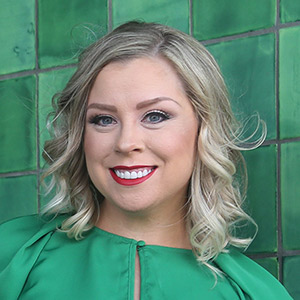Entertainment
/ArcaMax

4 ways the US military is embracing commercial technology
Many devices used daily by the civilian population have surprising origins in the military. GPS, which has become essential to many aspects of transportation, is a product of the space race of the 1950s and '60s. Drones, which now prowl the skies surveying and filming, have roots in the first pilotless vehicles in World War I.
War and ...Read more

Demand for dietitians is growing as Americans crave healthier lifestyles. Here's what the job entails.
In an era of social media influencers endorsing fad diets, questionable cleanses, and quick weight loss fixes, registered dietitians are arguably more valuable than ever in helping to cut through misinformation about nutritional health.
Jobs for registered dietitians and nutritionists are projected to grow 7% by 2033, according to Bureau of ...Read more

Encrypted QR Codes are here. Should workplaces be using them?
Companies go to great lengths to protect sensitive personal and financial information. But as cybercriminals become increasingly sophisticated, scams are on the rise, putting key information at risk of being compromised.
Scammers often use phishing techniques to access secure data or personal information. Cybersecurity company Egress reports...Read more

Need an escape? New tech can help you unplug without going totally off the grid.
Maybe the verdant peaks of the Great Smoky Mountains are calling your name, or maybe you're intrigued by the variety of flora and fauna at Joshua Tree National Park. No matter what kind of outdoor adventure piques your interest, there's always an opportunity for exploration on the horizon—and new technological advancements can help you get ...Read more

19 photos of Juneteenth celebrations over the years
Often called "America's second Independence Day" or "Black Independence Day," Juneteenth commemorates the end of slavery in the United States. It is celebrated annually every June 19 and is the first new federal holiday since 1983, when Martin Luther King, Jr. Day joined the calendar.
But its federal holiday designation in 2021 didn't come ...Read more

IDs through the ages: How people have proven their identity over time
With over 8 billion people spread across the Earth's nearly 25 million square miles of habitable land, proving one's identity has become more complex than it was with smaller populations thousands of years ago. Whereas ancient Greeks could just pair their name with that of their father to confirm who they were, modern-day home sapiens need more...Read more

As demand for US passports grows, here are the states with the most aspiring world travelers
More Americans than ever before are gaining access to international travel with a U.S. passport. According to the Department of State, in 1990, only 5% of U.S. citizens had a passport. As of mid-2024, 48% of Americans have a passport. Pew Research from 2023 says half of Americans have visited between one and four countries in their lifetime, ...Read more

Americans prefer dogs to cats as pets by a wide margin, according to the data
Canines are top dog when it comes to pet ownership: 45.5 million households have dogs compared to 32.1 million that have cats in 2024, according to the American Veterinary Medical Association. In a distant third are freshwater fish at 3.9 million, while birds, reptiles, and small animals trailing at 2.1 million, 2.3 million, and 1.3 million, ...Read more

What kinds of small businesses are doing the best?
Small businesses are mighty. They're considered the backbone of the American economy and the heartbeat of many communities.
While they're particularly vulnerable to market headwinds—think the economic fallout from the COVID-19 pandemic, rising inflation, and the impact of tariffs on parts and labor—small businesses are also more nimble ...Read more

To show employee appreciation and build morale in 2025, think beyond free pizza and beer
At the fitness media company Personal Trainer Development Center, owner Jonathan Goodman and his team wanted to show appreciation for a hard-working editorial director, who joked about landing a sneaker endorsement deal, despite not being a big-name athlete.
So Goodman and his team made him a mock-up of a Nike endorsement contract, which ...Read more

5 investment scams millennials fall for and how to avoid them
Age is just a number, particularly for online criminals. Scammers don't care how old someone is—if they can dupe someone into giving them money, that's all that matters.
While always a problem, the proliferation of online scams exploded during the COVID-19 pandemic. Between 2019 and 2020, scam complaints to the FBI increased by 69% to ...Read more

Learn about what service dogs can do, and what it takes to certify and protect them
Some dogs are more than man's best friend. Service dogs perform critical functions to keep their owners safe, healthy, and independent.
Also called "assistance dogs," these specially trained animals perform critical daily tasks for owners who have mobility, sensory, psychiatric, and developmental disabilities. While laws surrounding service ...Read more

The 5 most common AI capabilities adopted by businesses, and how they may impact employees
Whether it's automating tedious processes or offering round-the-clock customer support via chatbots, artificial intelligence models are transforming how businesses operate. As the potential of AI continues to unfold, companies are taking note: The AI market is projected to surge to $2 trillion by 2030, marking a 20-fold increase in under a ...Read more

Tick bites are on the rise. Here's how to protect yourself.
Longer summers and shorter winters in North America mean more warm days throughout the year. These conditions are also creating longer life cycles for native arachnids, including bloodsucking ticks.
During the height of tick season in 2024, emergency departments saw 112 tick bites per 100,000 visits—the highest level since May 2019, ...Read more











